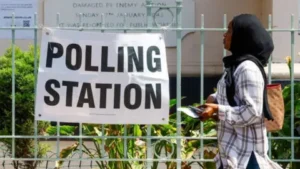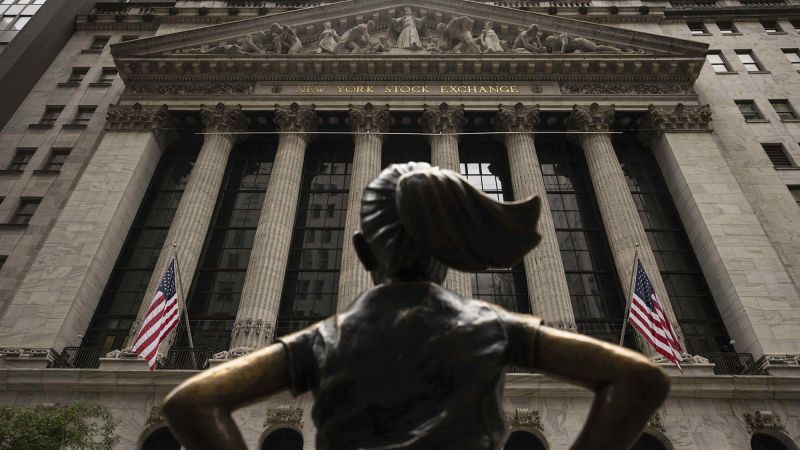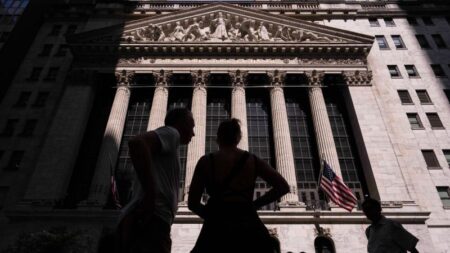The S&P 500 Index is currently on the verge of reaching an unprecedented high. This development is particularly noteworthy given that only two months ago, the index was grappling with the potential of a bear market. As it stands now, the S&P 500 closed on Tuesday just a mere 0.85% shy of achieving an all-time high. This quick turnaround has left many market analysts and investors wondering what lies ahead for the stock market.
As trading commenced on Wednesday, US stocks displayed a mixed performance. While the Dow Jones Industrial Average dipped by 40 points, the broader S&P 500 made a slight gain of 0.25%. The tech-centric Nasdaq Composite outperformed both, rising 0.6% by the day’s close. These movements in the stock market are reflective of the general sentiment among investors, especially following a reported ceasefire—however tentative—between Israel and Iran. Over the course of the past two days, the S&P 500 has rebounded impressively, soaring by 2.1%. This resurgence invites the question: can stock prices continue to rise, or are we likely to face additional hurdles soon?
Chris Brigati, the Chief Investment Officer at SWBC, commented that as tensions in the Middle East ease, investor attention is expected to shift back toward fundamental concerns such as tariffs, corporate earnings, the federal deficit, and the recently proposed legislation dubbed by President Trump as the “One Big Beautiful Bill.” Analysts are faced with numerous challenges ahead; for instance, the potential resurgence of inflation stemming from higher tariffs this summer. Some experts, however, remain optimistic, suggesting that despite such headwinds, stocks retain potential for further growth.
Mohit Kumar, an economist and strategist at Jefferies, recently shared his insights, expressing that while he does not expect a significant rally at current levels, he believes that the prevailing market trend is inclined to move higher, albeit gradually.
### A Wild Year for the Market
The trajectory of the US stock market has been nothing short of tumultuous this year. It experienced a dramatic decline in March and flirted with bear territory in April, only to recover significantly over May and June, leading to an overall year-to-date increase of over 3.5%. Historically, the S&P 500 had started the year on a high note, setting record after record until it peaked on February 19, during the early days of President Trump’s second term.
However, the volatility set in as Trump announced his tariff policies, with the index suffering noticeable losses. On April 8, following the “Liberation Day” tariffs announced on April 2, the S&P 500 marked its lowest point of 2023, having plunged 18.9% from its February high.
Subsequently, the index rebounded sharply in April when the Trump administration retraced some of its tariff decisions. A notable monthly performance saw the S&P 500 rally by 6.15% in May, which was the best gain for the month since November 2023 and the strongest performance for May seen since 1990. By June, the benchmark index had seen a further increase of 3%.
### Market Sentiments and Future Outlook
Even though the Trump administration has secured a trade deal with the UK and reached a truce with China regarding tariffs, investors appear to believe that the worst uncertainties around tariffs may have passed. In conjunction with this, momentum within the tech and artificial intelligence sectors is building up, as evidenced by the Nasdaq 100 reaching a new all-time peak—the first since February. The resurgence of tech and AI stocks is critical, as these sectors traditionally play a leading role in driving major US indexes.
Investment strategist Ross Mayfield acknowledged the reality of a potential market bubble but suggested that the current market environment has yet to reach that point. He emphasized the importance of leading tech stock performance given the concentrated nature of the US market.
Amidst these developments, Keith Buchanan, a senior portfolio manager at Globalt Investments, raised concerns regarding whether the current market level is justified in light of economic conditions. Investors appear to be overlooking tangible risks associated with tariffs and their economic ramifications. Many feel that the market can sometimes display irrational tendencies in its pricing, raising alarms about future profitability.
As Wall Street observes the outcomes of ongoing geopolitical tensions and anticipates second-quarter earnings reports starting in mid-July, investor sentiment remains critical. Key indicators such as how companies manage tariff-related costs will likely dominate quarterly discussions and assessments of future impacts on inflation, interest rates, and overall economic growth.
In a time where investor reactions can be swayed by news cycles, Chris Brigati offers a strategic reminder: maintaining a disciplined, long-term investment approach is essential. He cautioned against making hasty decisions in reaction to short-term market fluctuations, affirming the importance of staying invested amid the ongoing volatility.
In summary, while the S&P 500 stands tantalizingly close to record highs, currency influences, geopolitical events,











